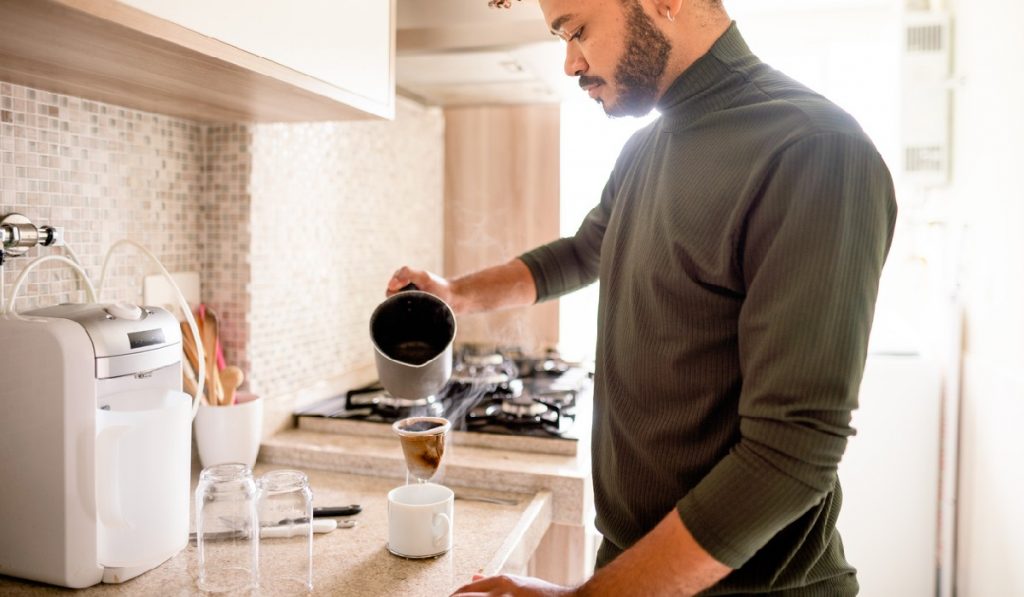Drip Coffee: What’s the Difference?

Coffee is a morning ritual for millions of people worldwide, and choosing the right cup of joe can make a big difference in how your day starts. If you’re confused about the difference between drip coffee and other brewing methods, you’ve come to the right place. In this article, we’ll discuss the different types of brews so you can find the right one for you.
We’ll take a look at the differences between drip coffee, espresso, French press, pour-over, and percolating. We’ll explain how each brewing method works, how it affects the taste of the coffee, and the equipment required, so you can decide which is the best option for you.
An Overview of Drip Coffee
Drip coffee is a method of brewing coffee by allowing hot water to slowly pass through ground coffee beans. The dripping process usually takes a few minutes. This method generally uses a filter to hold the ground beans and separate them from the resulting brewed coffee.
Brewing Equipment Needed
To brew drip coffee, you need some basic equipment, such as a filter, grinders, hot water kettle or stove top pot, measuring spoons or cups, an electric brewing machine, or a manual machine such as a v60 pour-over brewer. A drip coffee maker includes everything you need to make a great cup of coffee, other than the filter. Optional equipment includes burr grinders and scales.
Other Types of Brewing
French Press
French press brewing is different from drip brewing because it uses either a metal mesh plunger or a mesh sieve to press down on the grounds and extract more oils from them during the brewing process. This results in more flavorful and rich coffee compared to drip coffee which lacks these additional oils due to its passage through a filter. The French press also takes longer to brew than drip because it requires steeping for several minutes, while drip is almost instantaneous.
Espresso
Espresso is different from a drip because it requires significantly less water than a drip does. An espresso shot typically takes only 1 ounce of water per shot, while a drip takes at least 4 ounces per cup, depending on how strong you like your coffee brewed. Espresso shots are also typically much stronger than drip due to the high pressure used during the brewing process. Lastly, espresso drinks often involve added flavoring syrups and milk, but that’s not always present when drinking a cup of drip coffee.
Cold Brew
The most notable difference between cold brew and drip is that cold brew requires steeping. Steeping results in different flavor notes due to the lack of heat used during the extraction process when making cold brew. The other difference between these two methods is that cold brew requires significantly more time than dunking. Cold brew generally steeps for 12-24 hours before it can be served or consumed, compared to less than 10 minutes for most traditional hot coffees such as espresso.
Taste and Quality of Drip Coffee
Consistency of Taste
When it comes to taste and quality, one main advantage of using drip coffee is its consistency. Every cup of drip should taste almost the same every time you make it as long as you use the same recipe.
This is not always true for other methods of making coffee, such as the French press or espresso, due to their reliance on manual input, which could result in subtle variations in taste from cup to cup.
Effects of Brewing on Taste
Since no heat is involved when brewing with traditional drip machines, any flavors extracted from the beans are relatively undisturbed compared to beans exposed to higher temperatures. This lack of heat results in a smoother-tasting cup without any bitterness.
Customization Options for Drip Coffee
Different Types of Roasts
One great thing about traditional drip machines is that you can use whatever type of roast you prefer. Whether it’s light roasts for brighter tastes or dark roasts for bolder flavors, they all work just fine when using these types of brewers.
Different Brewing Times
Another customization option when it comes to making traditional coffees like drip coffees is controlling how long water remains in contact with ground beans before passing through the filter element. You can try different times depending on how strong of a flavor profile you’re looking for. Remember that longer contact equals a stronger-tasting cup, so be sure not to overdo it, otherwise, you may end up having a bitter-tasting beverage.
Grinding Coffee Beans
Another factor that can affect the final taste of a brewed sip is the grinding size used. Grinding too fine can result in an over-extracted flavor profile, while grinding too coarsely may result in under-extracted flavors. Generally, medium-fine grinds tend to produce the best results.
Conclusion
Drip coffee is an excellent option if you are looking for an easy, affordable, and delicious way to enjoy coffee. With the right beans and brewing method, you can enjoy a consistent cup of coffee that has a unique flavor profile every time. So, if you’re looking for an easy and affordable brewing method, drip coffee may be the perfect option for you.